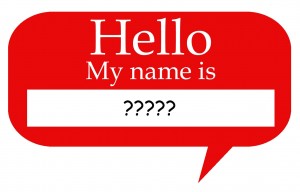How To Define Yourself As An Author (Marketing Plan #1)
 Originally published in ACFW Colorado’s The Inkwell Blog.
Originally published in ACFW Colorado’s The Inkwell Blog.
Beginning this week, I will be taking you through the steps of writing a marketing plan. This is different from a plan prepared by your publisher or publicist, since it focuses on steps that you as an author can easily take to promote your own work. There are as many different formats as there are authors, and you can feel free to adjust for your needs. This just happens to be one with which I’m comfortable, and I’ve used it to successfully market everything from medical products to yoga classes to business books.
The first step is to define yourself and your product. As authors, we’re not just selling our books, we’re also marketing ourselves. This begins with your mission statement and your tag line.
1. What is your mission statement?
A mission statement is your purpose in writing. What do you hope to accomplish? What do you wish your readers to get out of your work? You’ll be the only one to see this, so don’t worry about polishing it. This is just to help you guide your thoughts as you define your work in the marketplace.
Here’s my mission statement for my fantasy fiction: To portray God’s unceasing faithfulness amidst life’s most difficult trials.
If I wrote a non-fiction book on marketing, my mission statement might sound like:To overcome the stigma of marketing in the Christian writing community and enable authors to effectively reach their widest possible audience.
2. Come up with a tag line.
Yes, this is a tricky one, and admittedly, an optional one. If you’re going to use a tag line, it needs to encompass the general feeling of your mission statement, as well as your genre. It should be specific enough to give readers a flavor of your personality while not being so specific that you are locked into always writing on one particular topic (for example, romances set in Austin, Texas). Here are a few memorable ones used by published authors.
Romance, suspense, and hope. (Colleen Coble)
Where adventure comes to life. (Jill Williamson)
Stories for the hero in all of us. (Sharon Hinck)
Each tag line gives a clue to both the type of book the author writes and a sense of their style. Colleen Coble’s tagline tells us clearly she writes romantic suspense with an inspirational message. Jill Williamson’s says there’s an adventure element to all her works, and the tone hints at the fact they’re written for a younger audience. Sharon Hinck’s motto tells us we’ll receive stories about ordinary people doing extraordinary things.
It’s worth noting that many established, well-known authors do not use tag lines. Others have waited to use them until late in their careers.
3.Define your genre.
I know, how could you possibly fit that contemporary-fiction-suspense-modern-historical novel you’ve been writing into a single genre? You’ve got to try. Until the bookstore devotes shelf space to a time-travel-chick lit-horror category, people are going to look for your books in a specific category.
One way to determine your genre is to think about what would most hurt your story if you removed it. Does the plot fall apart if you remove the love story? It might be a romance. Does it lose its teeth when you take out the murder? Then it might be suspense/mystery.
Once you’re finished with these three steps, you should have a better idea of who you are as an author and what defines your book.
This week’s action item: Write your mission statement and tag line (if desired). Define your genre.
Next week: The Competitive Landscape– how do you fit into the existing marketplace?

Add Your Thoughts